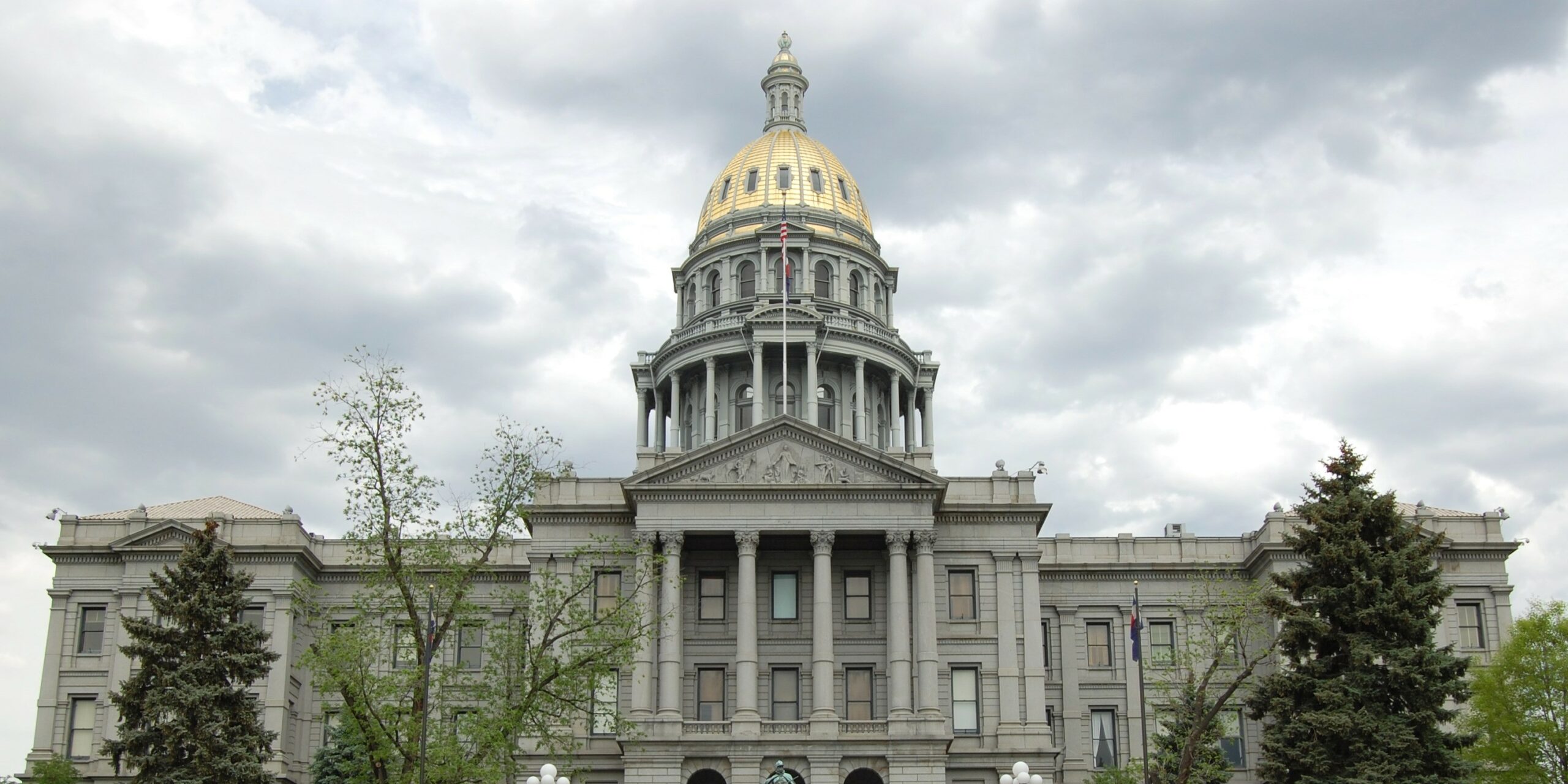
Accident Investigation Reform
GDT > Features > Light Rail Safety > Accident Investigation Reform
Support the Bill to make Colorado light rail accident investigation reports public!
- The Railroad Investigative Report Confidentiality Bill will update C.R.S. § 40-18-104 to mandate accident investigation reports are not kept confidential and information is released in a timely manner to the public.
- Colorado currently has the most restrictive statute in the nation governing light rail accident investigation confidentiality.
- Vital information on light rail safety will be available to all who should know about it (e.g. transit industry safety professionals) shortly after an accident or incident occurs.
- The Bill supports open and transparent safety regulation that is proven to reduce accidents and save lives.
- The Bill will be introduced to the Colorado Legislature in January 2025.
Bill Sponsors
Senate Prime Sponsors: Sen. Faith Winter, Sen. Nick Hinrichsen
House Prime Sponsors: Rep. Mandy Lindsay, Rep. Alex Valdez
Co-sponsors: Rep. Andrew Boesenecker, Rep. Lisa Cutter, Rep. Meg Froelich, Rep. Tisha Mauro, Rep. Stephanie Vigil
Many thanks to all of you!
Light Rail Accident Investigation in Colorado
Light rail systems are regulated on a Federal level by the The Federal Transit Administration (FTA). Under 49 CFR Part 674.25 the FTA nominates a State Safety Oversight Agency’ (SSOA), which amongst other delegated duties handles accident investigations. In Colorado, the role of the SSOA is performed by the Public Utilities Commission (PUC).
What happens when there is a light rail crash or derailment?
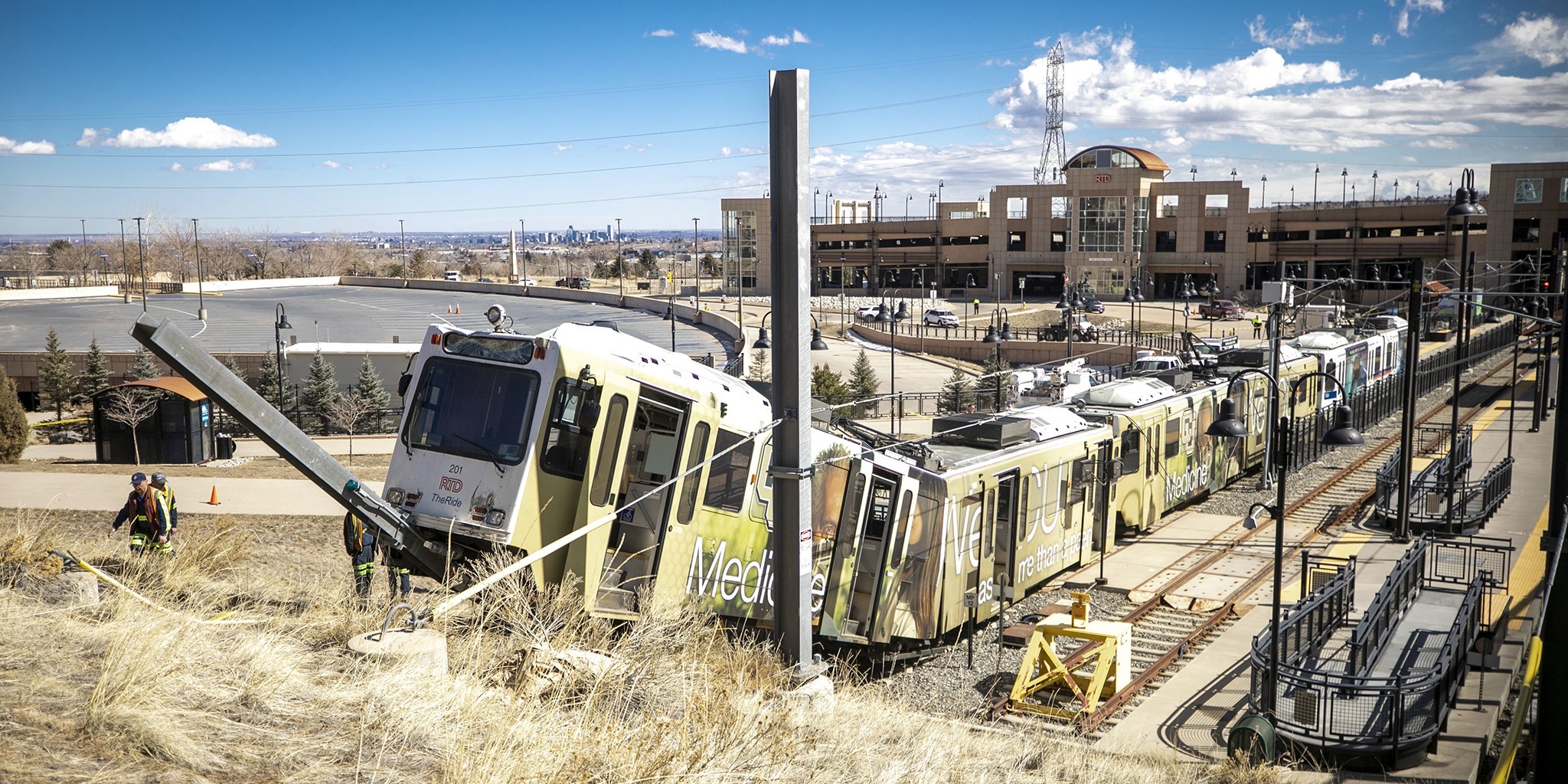
Firstly, any incident that constitutes “A Derailment (Mainline or yard)” under 49 CFR Part 674.33 in Colorado must be reported by the ‘Regional Transit Authority’ (RTA) – that’s RTD – to the PUC and the FTA within two hours of happening.
Then, in accordance with 4 CCR 723-7 7349, the RTA (RTD) shall investigate the accident on behalf of the PUC, submitting the report along with any corrective action plans (CAPS) and hazard investigation reports the PUC deems appropriate. The PUC then reviews and approves these documents, requesting revisions and resubmittals as necessary.
While any associated CAPS and hazard investigation reports may be made public, accident investigation reports are kept confidential under C.R.S. § 40-18-104. There is technically a mechanism to remove the extraordinary protections afforded to the accident investigation reports by ‘subsequent Commission decision’, however this is rarely used and places the onus an outside party to demonstrate why a report should be made public, and not on the PUC to demonstrate why it should be kept confidential.
Why are the current arrangements inadequate?
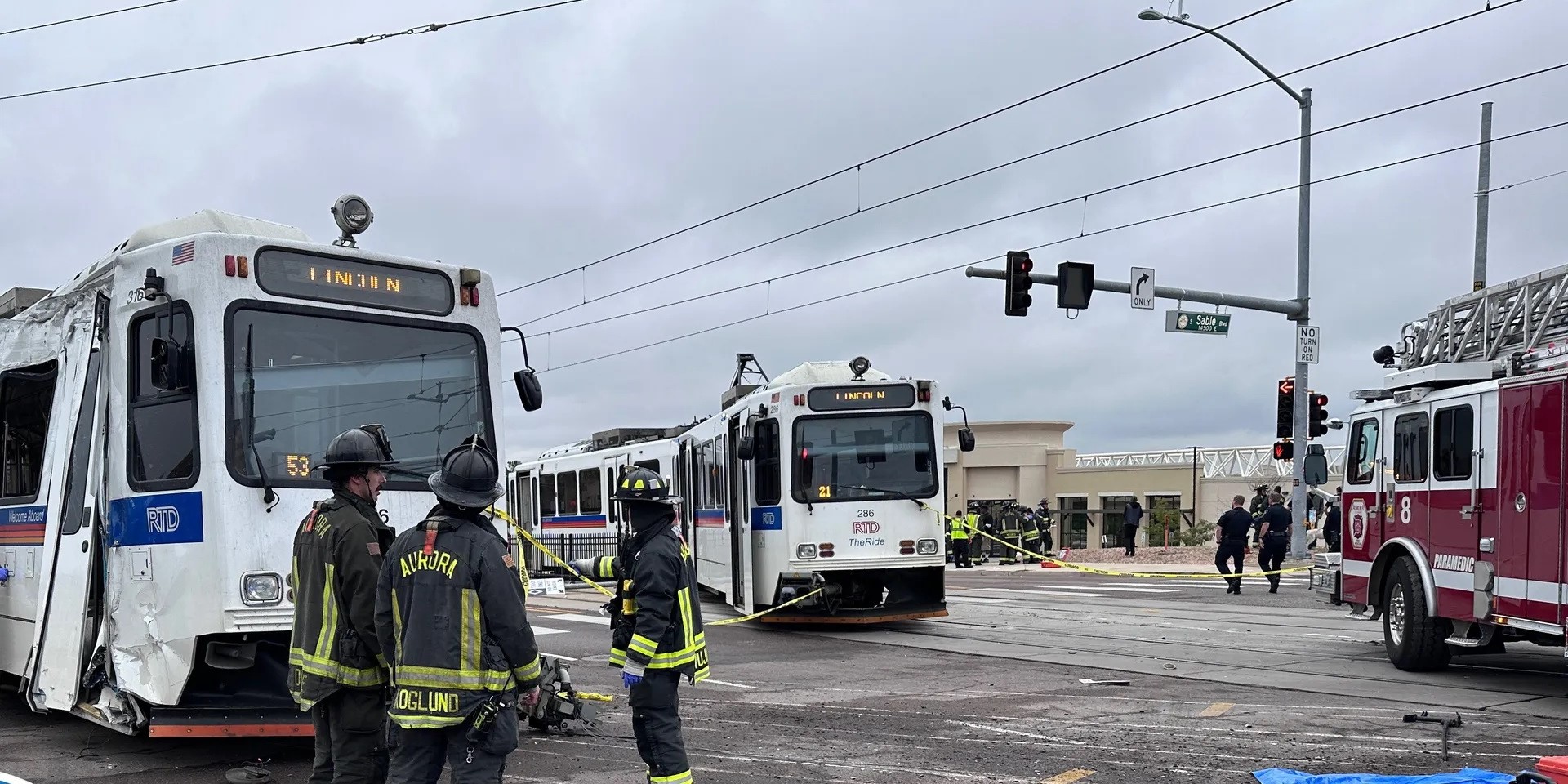
The main reason the current arrangements are inadequate is the lack of transparency and a lack of timely sharing of safety related information, which is at odds with an open, transparent and ultimately successful safety culture.
The second reason is that allowing the RTA – i.e. the light rail operator – to investigate its own accidents disincentives it to investigate the solutions that will ultimately prevent a repeat incident due to perceived complexity or cost. This has been borne out in the RTD investigations where the focus has been on what the train operator did wrong rather than whether the safety systems in place were adequate and could be improved.
The following three instances show how unsatisfactory the current arrangements are, where the RTA (RTD) investigates its own of light rail accidents behind closed doors:
- A derailment on the R Line in September 2022 that was identical to one that occurred just 3 1/2 years prior in 2019. The 2019 accident investigation failed to mandate the necessary improvements to the light rail signaling system with sufficient urgency leading to ‘lighting to strike twice’ in the same location.
- Following the same derailment, poor procedures for the handling of camera hard disc drives by RTD resulted in further opportunities to recover video not being taken.
- A bump stop crash on the W Line that was investigated by RTD. The investigation focused on operator error and failed to consider or recommend a signaling upgrade that would prevent a repeat occurrence.
- A derailment on the E Line in January 2024 where, as of October 2024, the detailed information on the circumstances and causes are still being kept out of the public domain.
What can we learn from Aviation?
The aviation industry demonstrates an open and transparent safety culture with a recent example being the prompt sharing of information related to the Maneuvering Characteristics Augmentation System (MCAS) on the 737 MAX aircraft after two crashes where it appeared that the system was a factor. Aviation authorities around the world quickly agreed to ground the aircraft type and it is almost certain that this action prevented a third deadly crash.
The results of the American aviation industry’s successful safety culture are clear to see – as of August 2024, no one has died in a commercial aviation crash on U.S. soil in over 15 years.
PUC Accident Investigations Bill Proposal

GDT recommends that new legislation be introduced to reform light rail accident investigations, in a model similar to that used by the National Transportation Safety Board (NTSB) for aviation and major rail accidents. The focus should be on promptly getting key facts about an incident into the public domain (to avoid misinformation) and carrying out a transparent and thorough investigation so that the full range of safety lessons can be learned and passed on. Legal considerations should always be secondary to safety. GDT’s main proposals are:
- Update C.R.S. § 40-18-104 to mandate accident investigation reports are not kept confidential and information is released in a timely manner to the public.
- Require the PUC (the “commission”) to promulgate such rules as are necessary under C.R.S. § 40-18-103 that update 4 CCR 723-7 7349 to:
- Take over responsibility for the carrying out of accident investigations from the Regional Transportation Authority (RTA).
- Require publication of an initial accident investigation report that establishes the key facts within 30 days of the incident.
- Require publication of a full and final accident investigation report ideally within a year of the incident, but certainly within 2 years.
- Require that any urgent safety recommendations identified during the course of its accident investigation should be issued immediately and not delayed until the publication of the next report.
Case Study 1 – 2015 Amtrak Philadelphia Derailment
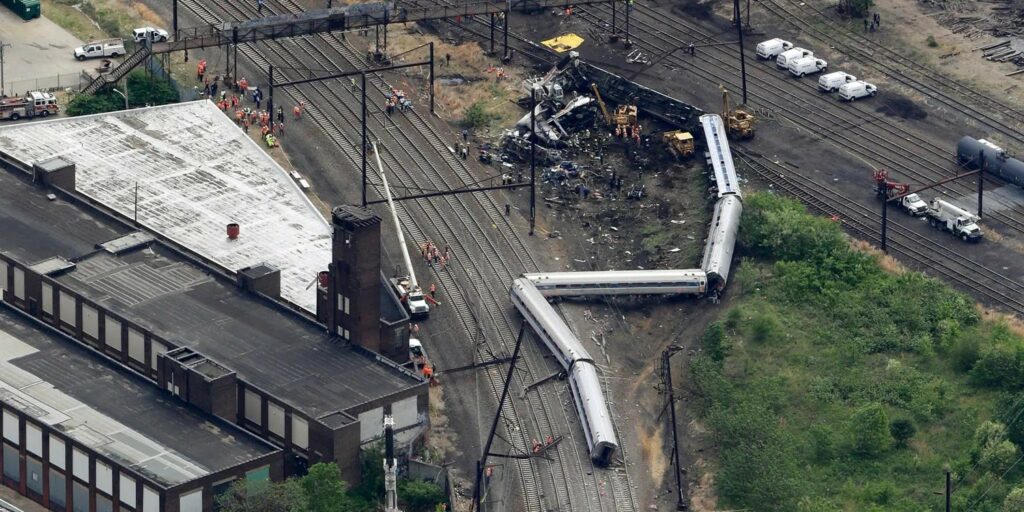
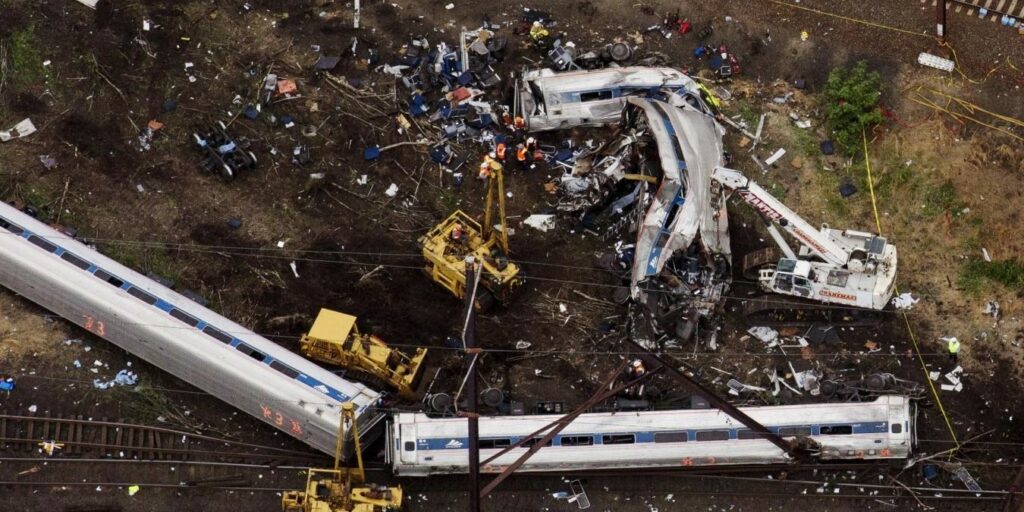
Incident Description
On May 12th, 2015 at approx. 9:21pm, Amtrak Northeast Regional Train No. 188 from Washington, D.C. bound for New York City derailed and wrecked on the Northeast Corridor at the Frankford Junction Curve near the Kensington neighborhood of Philadelphia, Pennsylvania. Of the 238 passengers and 5 crew on board, 8 were killed and over 200 were injured, with 11 critically so. The train was traveling at 102 mph in a 50 mph zone of curved tracks when it derailed.
The line was reopened to passengers on May 18th – just 6 days after the incident.
Investigation
The incident was investigated by the National Transportation Safety Board (NTSB).
The NTSB is known for being pro-active in providing details in the immediate aftermath of incidents via press conferences. On May 13th 2015, it announced the probable cause of the incident was overspeed into the curve which could have been prevented by Positive Train Control (PTC).
A “final” 70 page report was published on May 17th, 2016. The detailed report determined that the probable cause of the accident was the engineer’s acceleration to 106 mph just before he entered a curve with a 50 mph speed restriction, due to his loss of situational awareness likely because his attention was diverted to an emergency situation with another train. The report also examined a number of factors that influenced survival rates, including the interior design of the “Amfleet” cars on the train and the overall EMS response to the incident.
3 recommendations were made by the NTSB in advance of the report, with another 11 recommendations being made in the report itself. Installation of Automatic Train Control (ATC) or Positive Train Control (PTC) was not among the recommendations as these two systems (either which could have prevented the derailment) were already planned to be installed at the incident location by the end of 2015.
Case Study 2 – 2016 Croydon, UK Tram Derailment
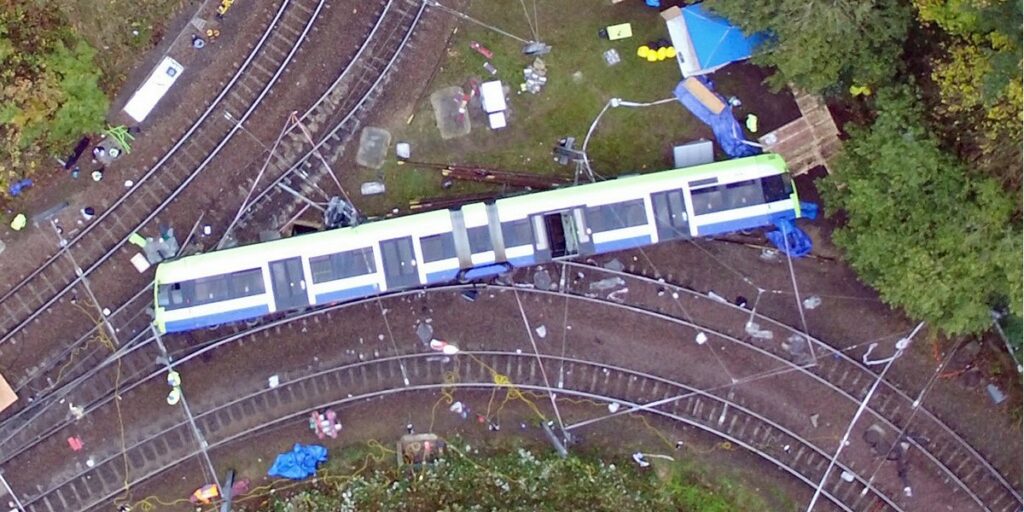
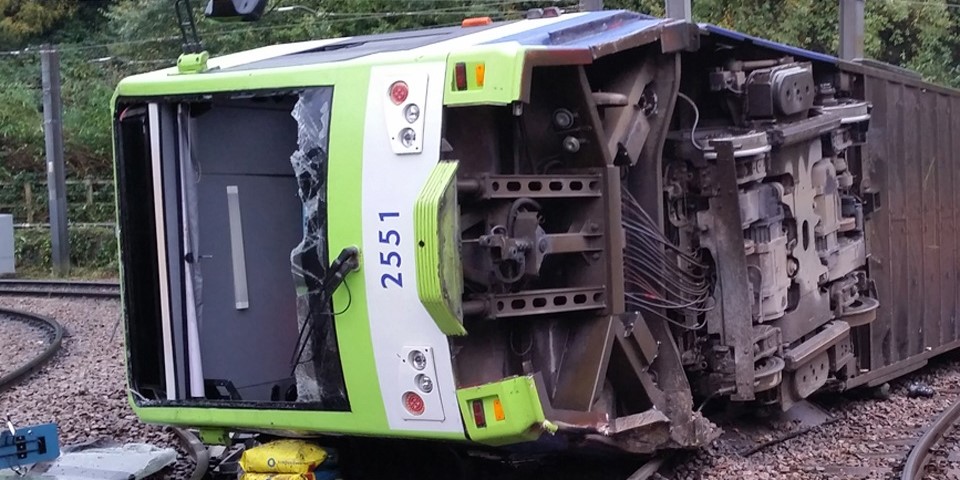
Incident Description
On November 9th, 2016, a tram (light rail vehicle) operated by Tramlink in London derailed and overturned on a sharp bend approaching Sandilands Junction. Of 69 passengers on board, there were 7 fatalities and 62 injured, 19 seriously.
Full services were reinstated on the line 9 days later on November 18th.
Investigation
The incident was investigated by the United Kingdom Rail Accident Investigation Branch (RAIB).
A 9 page interim report was published on November 16th, 2016, just one week after the incident. The report established key facts about the incident (date, time, location, train # etc.) and stated that initial investigations had revealed that the primary cause was the tram had entered the 12.5 mph speed restricted curve at a speed of 43.5 mph.
The report also contained some “urgent safety advice” to be acted on immediately by the tram operator.
A “final” 181 page report was published on December 2017, with revisions made up to October 2020. The detailed report identified the immediate cause of the incident as well as causal factors, underlying factors, factors affecting the severity of consequences, observations and other issues. This included a detailed explanation of what happened, an analysis of the operator’s sleep routine, how the interior safety features of the light rail vehicle performed.
The report made 15 recommendations, the key one being “…installing suitable measures to automatically reduce tram speeds if they approach higher risk locations at speeds which could result in derailment or overturning.”
Case Study Conclusions
Both case studies show the value of releasing accident investigation reports to the public so that a wide range of people, some of who have professional roles that do not immediately have a rail safety connection, can read and learn valuable safety lessons.
In both incidents, the investigating agencies released safety recommendations in advance of the publication of the “final” reports and before the respective investigations were fully completed.
While methods differed, both investigating agencies saw the value of releasing as much confirmed information as possible in the immediate aftermath of the incident.